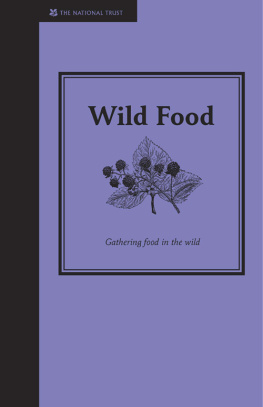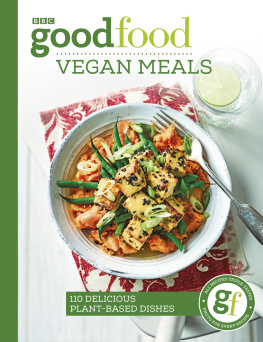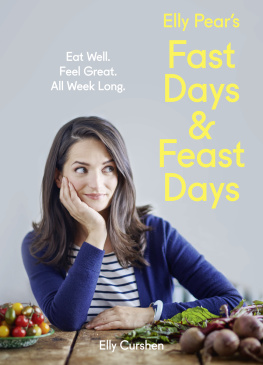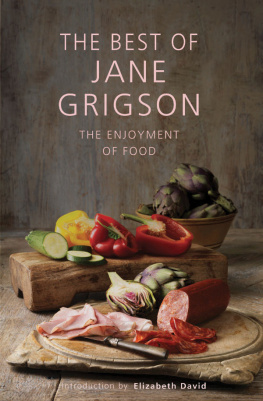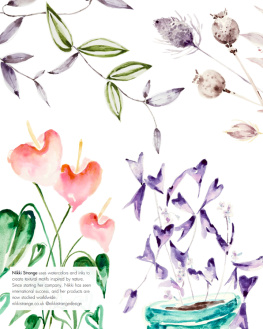
For Caroline Stenner, as proof that I eat more than just cheese sandwiches.
And Jack Van Praag, for inspiring a journey that ensured it was so.

Contents
Apples, cherries, peaches, pears, plums, quince
Apricots, bergamots, dates, figs, lemons, oranges
Bananas, grapefruits, lychees, mangos, papayas, persimmons, pineapples, pomelos
Banana leaves, blackcurrant leaves, herbs, kaffir lime leaves, tea leaves
Chamomile, elderflower, lavender, rose, saffron, vanilla
Cardamom, nutmeg, poppy seeds, sesame seeds
Blackberries, blackcurrants, blueberries, gooseberries, raspberries, redcurrants, strawberries

Introduction

botanical, n. /btnk()l/
Of or relating to botany, or the biological characteristics and attributes of the plants with which it is concerned.

T HIS BOOK begins with a nutmeg.
A nutmeg is a fairly indistinguishable object. At a passing glance, it could be a wooden bead, a trinket, an anonymous nut in a Christmas box. Its surface is unpromising, weathered with wrinkles and more reminiscent of furniture than food. Yet apply a little pressure with a sharp grater, start to mine the nutmeg for its contents, and something rather magical happens. That tough surface begins to give way to a yielding, creamy interior, criss-crossed with dark rivulets like the veins of a leaf, or a scan of a human brain. As tiny furls of nutmeg fall softly from the grater like sawdust, you start to detect a warming, spicy woodiness, redolent of the inside of a camphor chest or a sandalwood box; a slightly medicinal tang; a hint of butter and cream. The scent of the nutmeg is comforting, familiar, exotic and alluring all at once no surprise, perhaps, for a botanical whose Latin name is Myristica fragrans. This spice was once believed to ward off the plague, was once more valuable than gold, and is often cited as possessing hallucinatory powers. It is just as at home simmered into Malaysian and Indonesian sweets as folded into the cosseting white sauce for a fish pie or the buttery rubble that will top an apple crumble. The nutmeg is unassuming, inexpensive and compact, yet a few strokes with a grater brings it to life and adds an essential spicy warmth to a whole host of dishes.
The nutmeg, staple of kitchen cupboards and cauliflower cheeses everywhere, also has perhaps the bloodiest history of any ingredient. When you add its russet shavings to your dinner or dessert, you are following in a long line of consumers for whom the nutmeg was a desirable seasoning so desirable, in fact, that it was at the heart of Dutch colonialism in the islands of Indonesia and prompted a series of atrocities that decimated the indigenous population of the Banda islands, where nutmeg grows native. Prior to this, nutmeg was traded by the Arabs during the Middle Ages and sold to the Venetians for high prices because the sailors refused to divulge the source of their supply. It was prized in medieval cuisine, where it made pease pudding a type of gruel made from dried pulses more appealing, and improved the flavour of ale. Used medicinally since at least the seventh century, including as an aphrodisiac, the psychoactive effects of nutmeg rendered the spice notorious during the nineteenth century. Following the Napoleonic Wars, the British took nutmeg trees to Sri Lanka, Penang and Singapore, then to other colonial strongholds in the Caribbean and West Africa. Today, nutmeg is widely used in Malaysian and Caribbean cuisine.
On a trip to Penang in 2013, I found myself strolling wide-eyed round a bustling grocery market. Between the piles of coconuts, the wriggling fish in buckets and the baskets of powdered spices lay the humble nutmeg in more manifestations than I had ever considered possible. Whole nutmegs, at least twice as large as any I had ever acquired back home, dark and glossy like horse chestnuts; candied nutmeg, shredded and sugared for use as a topping on ais kacang, a sweet shaved ice dessert; nutmeg rind, to be boiled and served as iced juice; nutmeg pods, candied and sold in syrup of various colours and fragrances; golden, spiky mace, the coating or aril that forms around the nutmeg seed inside its shell, for simmering in curries, soups and stews; nutmeg oil, to treat stomach pain and nausea; nutmeg balm, which turned out to be the best treatment for insect bites I have ever laid my hands on. I took home a bag of candied nutmeg, some of which was folded into an apple and blueberry tea bread for breakfast back in my Yorkshire kitchen, and some of which was baked into pumpkin muffins.
That a once-mysterious and highly prized spice from the Far East is now almost as common in kitchens the world over as salt and pepper fascinates me. How did all these different countries find such diverse uses for its woody fragrance? Why do we Brits tend to pair nutmeg with cream, cauliflower or potatoes, while other cultures partner it with beef, pumpkin or rum? To what other innovative uses might we put it in the kitchen? And, going further, what great potential is there for the other fruits, flowers, leaves, seeds and spices we tend to keep in our cupboards? What were the historical journeys of these natural treasures? Such questions were at the heart of the food blog I started in 2010, named Nutmegs, seven after a quotation from Shakespeares Winters Tale. Many years later, those same questions are at the heart of this book, too.
Although they have formed the backbone of cuisines the world over for centuries, botanical ingredients fruits, flowers, leaves, seeds and spices have a tendency to shy away from the limelight, letting more boisterous flavours take centre stage. That is, to an extent, their purpose: to coax out other flavours while remaining subtle, bringing a sense of completion to a dish. Consider an apple crumble without a whisper of cinnamon, or a roast leg of lamb without the resinous tang of rosemary. Yet there is also something luxuriant about using these ingredients in cooking: they are rarely vital, but rather a way to add complex layers of flavour, new twists and aromatic surprises. This book explores some of that magic, aiming to place botanicals back in the limelight and to appreciate them for their unique qualities, history and potency.
We have recently begun to pay more attention to these supporting acts in the kitchen. Increasingly exotic botanicals are appearing in the supermarkets every day: the presence of kaffir lime leaves, edible flowers and Thai basil on our shelves caters to the growing number of cooks embracing new flavours, while our burgeoning love of cuisines from the Middle East encourages creative ways with spices, rose petals and saffron. Drawing on the bounty of natures botanicals is a wonderful way to tap into the vibrant cuisine of other cultures: stir a few shredded kaffir lime leaves into a pan of simmering coconut milk, and you could be slurping


